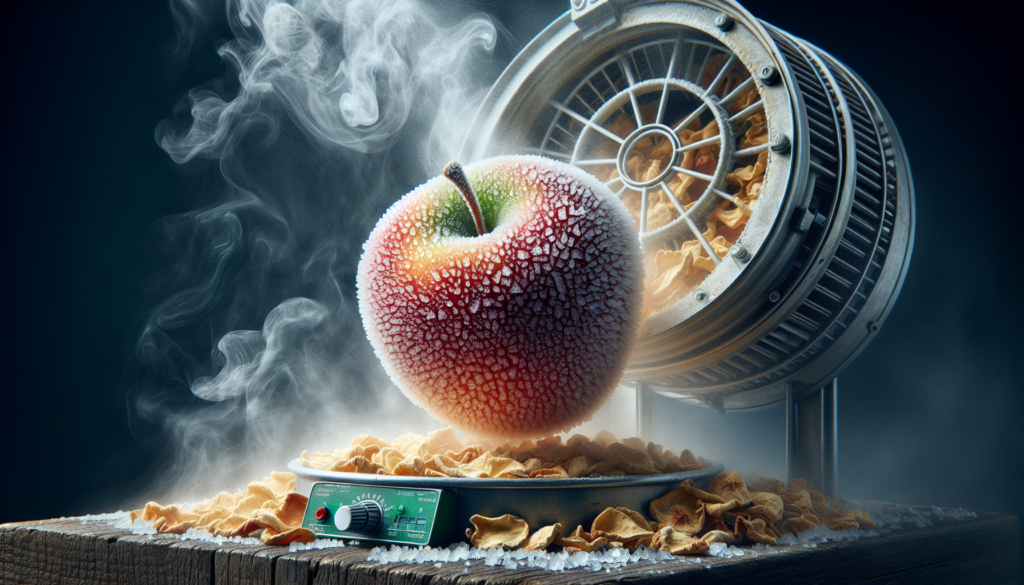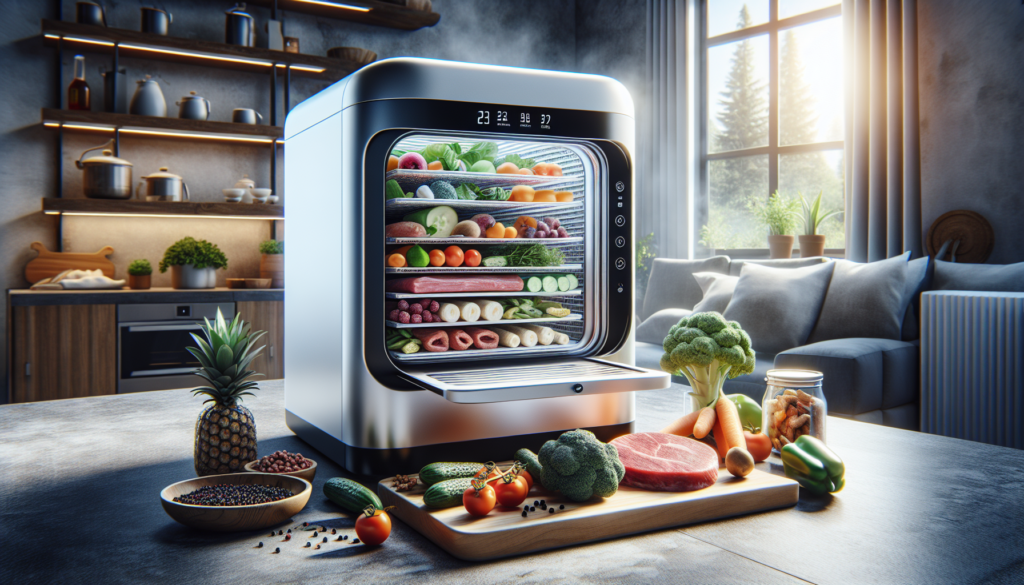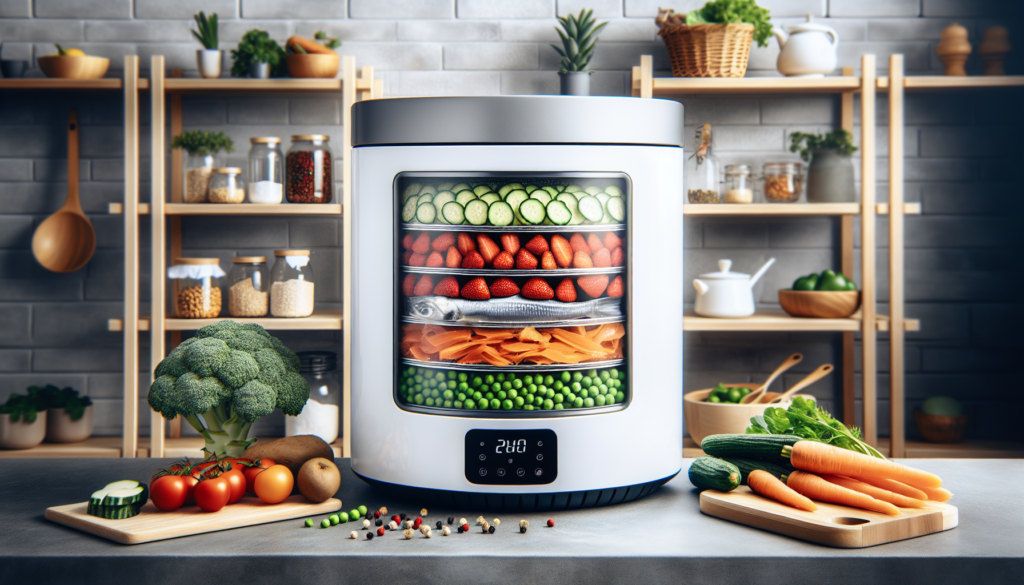Imagine being able to enjoy your favorite fruits, vegetables, and even cooked meals at any time of the year, without worrying about spoilage. Freeze drying at home offers a convenient solution to preserving food, extending its shelf life, and retaining its nutritional value. In this article, we will explore the pros and cons of freeze drying at home, helping you make an informed decision about whether this method is right for you. From the simplicity of the process to the potential costs and limitations, we will cover it all. So, grab a cup of coffee and let’s dive into the fascinating world of freeze drying!
Pro: Cost Savings
Freeze drying your own food at home can offer a range of cost-saving benefits that can’t be overlooked. One of the most significant advantages is the reduced grocery expenses. By freeze drying your own meals, you can cut down on the need to buy costly pre-packaged freeze-dried foods from the store. Instead, you can buy fresh ingredients in bulk and preserve them at home for a fraction of the price.
Another financial benefit of freeze drying is in the preservation of seasonal produce. We all know how expensive it can be to purchase certain fruits and vegetables when they are out of season. By freeze drying seasonal produce, you can enjoy those fruits and veggies year-round without spending a fortune. Plus, freeze drying allows you to take advantage of sales and discounts on perishable items, reducing your overall grocery bill.
Furthermore, freeze drying helps minimize food waste. We’ve all experienced the disappointment of throwing away spoiled food. By freeze drying excess produce or leftovers, you can extend their shelf life and prevent them from going to waste. This not only saves you money but also helps reduce your carbon footprint by reducing food waste.
Pro: Convenience
Not only is freeze drying cost-effective, but it also offers unparalleled convenience. One of the most significant conveniences is the ability to stockpile emergency food. In uncertain times or during natural disasters, having a supply of nutrient-rich freeze-dried meals can be a lifesaver. With freeze-dried food stored away, you can ensure that you and your family have access to nourishing meals even when fresh food is scarce.
Freeze drying also streamlines meal preparation. Once the food is freeze-dried, all you need to do is add water to rehydrate it. This eliminates the need for time-consuming chopping, peeling, and slicing, making meal preparation a breeze. Whether you’re a busy professional or a parent juggling multiple responsibilities, freeze drying can drastically simplify your cooking routine.
Another convenient aspect of freeze drying is the enhanced portability of meals. Unlike bulky canned goods or fresh produce, freeze-dried food is lightweight and compact. This makes it the perfect option for outdoor adventures, camping trips, or even just packing lunch for work. With freeze-dried meals, you can enjoy delicious and nutritious food on the go without the hassle of carrying heavy containers or worrying about food spoilage.

Pro: Nutritional Value
When it comes to the nutritional value of freeze-dried food, the benefits are impressive. Freeze drying retains the vitamins and minerals present in the fresh ingredients. Unlike traditional drying methods that can cause significant nutrient loss, freeze drying preserves the nutritional content of the food. This means that you can enjoy the same level of vitamins and minerals even after the food has been freeze-dried.
Additionally, freeze drying helps preserve the natural flavors of the food. The process removes moisture from the food while preserving its taste. This means that when you rehydrate the freeze-dried food, it will taste just as good as it did when it was fresh. You won’t have to compromise on flavor even when consuming food that has been preserved for an extended period.
Another advantage of freeze drying is the control it gives you over additives and preservatives. When you freeze dry your own food, you have the freedom to choose exactly what goes into each meal. This allows you to avoid harmful additives, excessive salt, or artificial flavors that are often present in commercially freeze-dried products. With freeze drying, you have full control over the nutritional quality of your food.
Pro: Culinary Creativity
If you’re a food enthusiast looking for a way to express your culinary creativity, freeze drying provides the perfect opportunity. Freeze drying offers the chance to explore unique flavor combinations that may not be readily available in pre-packaged freeze-dried foods. You can experiment with different ingredients and create your own custom freeze-dried meals that cater to your taste preferences.
Moreover, freeze drying preserves the textures of diverse ingredients. Whether it’s the crispiness of vegetables or the tenderness of meats, freeze-dried food retains its original texture even after rehydration. This opens up a world of possibilities for creating innovative recipes and adding interesting textures to your meals.
With freeze drying, you can try out various recipes without the fear of wasting ingredients. If a new recipe doesn’t turn out as expected, you can simply freeze dry the leftovers and give it another try later. This eliminates the pressure of getting a meal right the first time and encourages culinary experimentation and creativity in the kitchen.

Pro: Longer Shelf Life
One of the most compelling reasons people choose to freeze dry their food is the significantly longer shelf life it provides. When properly freeze-dried and stored in airtight containers, food can last for months or even years without losing its quality or nutritional value. This makes it an excellent option for long-term food storage, emergency preparedness, or even for stocking up on ingredients during sales or harvest seasons.
Additionally, freeze drying eliminates the risk of freezer burn. Unlike traditional freezing methods that can cause moisture loss and damage the texture of the food, freeze drying removes the moisture directly, ensuring the food remains in optimal condition. This means that even after months or years of storage, your freeze-dried food will taste as fresh as the day it was prepared.
Furthermore, freeze drying prevents spoilage and bacterial growth. By removing water from the food, freeze drying creates an inhospitable environment for bacteria and molds to thrive. This helps maintain the quality and safety of the food over an extended period. No more worries about food going bad before you have a chance to consume it.
Con: High Initial Cost
While freeze drying at home brings many benefits, it’s essential to consider the potential drawbacks. One of the main cons is the high initial cost associated with the equipment. Freeze dryers can be quite expensive, and the investment in this equipment may pose a financial barrier for some individuals. However, it’s worth noting that the long-term cost savings from freeze drying can offset this initial expense over time.
In addition to the cost of the equipment, there may be an investment in necessary accessories. This can include items such as a vacuum sealer, oxygen absorbers, or high-quality food storage containers. These accessories are integral to ensuring the effectiveness and longevity of the freeze-drying process. While they may add to the initial costs, they are essential for successful and safe home freeze drying.
It’s also important to consider the additional electricity consumption associated with freeze drying. The process requires electricity to run the freeze dryer and maintain the low temperatures required for optimal preservation. This may result in higher energy bills, especially for those who plan to do frequent and extensive freeze drying. It’s recommended to assess the potential increase in electricity costs before embarking on home freeze drying.

Con: Time-Consuming Process
Freeze drying at home can be a time-consuming process that requires patience and planning. There are several stages involved in the process, including pre-freezing and preparation, the actual drying duration, and post-processing steps.
Pre-freezing and preparation stages involve prepping the food before it goes into the freeze dryer. This can include washing, peeling, slicing, and arranging the food on trays. Depending on the quantity of food and complexity of the ingredients, this can take a considerable amount of time.
The drying duration can also be lengthy, especially for foods with high moisture content. As freeze drying removes water from the food by sublimation, it can take several hours or even days for the process to complete. It’s important to plan ahead and allocate sufficient time for the entire freeze drying process.
After the actual drying, there are post-processing steps to consider. This can include packaging the freeze-dried food in appropriate containers, labeling them, and storing them in a cool, dry place. While these steps may not be excessively time-consuming, they do require attention to detail to ensure the longevity and quality of the freeze-dried food.
Con: Space Requirements
Freeze drying equipment and the process itself require a certain amount of space, which may pose challenges for some individuals. One of the space requirements is a dedicated freeze-drying area. Depending on the size of the equipment, you may need a separate room or a part of a room to set up and operate the freeze dryer effectively.
Storage space for equipment is another consideration. Freeze dryers can be large and bulky, especially for larger models or professional-grade machines. It’s crucial to assess your available storage space and ensure that you have an appropriate area to store the equipment when not in use.
For smaller households or those living in apartments or condos, space limitations can be a significant concern. Freeze-drying requires enough room to accommodate the equipment, trays of food, and the post-drying storage. It’s essential to carefully evaluate your available space and determine if it can comfortably accommodate the freeze-drying process.

Con: Complex Operation
The operation of a freeze dryer can be complex, especially for beginners. Understanding and adjusting the equipment settings correctly is crucial for successful freeze drying. Factors such as temperature, time, and humidity need to be carefully controlled to achieve optimal results. This learning curve can be challenging for those new to freeze drying.
With freeze drying, there is a gradual learning curve as you familiarize yourself with the intricacies of the process. It may take several attempts to get the settings just right and achieve the desired freeze-dried quality. Patience and a willingness to learn from any mistakes or subpar results are key to mastering the operation of a freeze dryer.
Furthermore, there is a risk of mistakes affecting the final freeze-dried results. Whether it’s not freezing the food properly before placing it in the freeze dryer or misconfiguring the equipment settings, errors can impact the overall quality of the freeze-dried food. It’s crucial to follow instructions carefully and seek guidance from reliable sources to minimize the risk of mistakes.
Con: Limited Application
While freeze drying has broad applications, it does come with some limitations that should be considered. One of these limitations is the restriction on certain food types. Some foods, such as high-fat content foods, do not freeze dry well as their fat content can lead to rancidity. Additionally, freeze drying may alter the texture of certain food items, making them less desirable for some individuals.
Freeze drying also presents challenges with moisture-rich items. Foods with high water content can take longer to freeze dry, increasing the overall processing time. Additionally, they may require more frequent maintenance and monitoring of the freeze dryer to ensure effective drying.
Another limitation of freeze drying at home is the inability to freeze-dry liquids. Liquids, such as soups or sauces, cannot be freeze-dried in their liquid state. However, there are techniques to freeze-dry liquids by transforming them into a powder or concentrated form before the freeze drying process. While possible, this adds an extra step to the overall freeze drying process and may require additional equipment or expertise.
In conclusion, freeze drying at home offers numerous advantages, including cost savings, convenience, enhanced nutritional value, culinary creativity, and longer shelf life. However, there are also considerations to keep in mind, such as the initial cost, time-consuming process, space requirements, complex operation, and limited application. By weighing the pros and cons, you can determine if freeze drying is a suitable option for your lifestyle and needs. With proper planning, patience, and practice, home freeze drying can be a rewarding and practical approach to food preservation.
